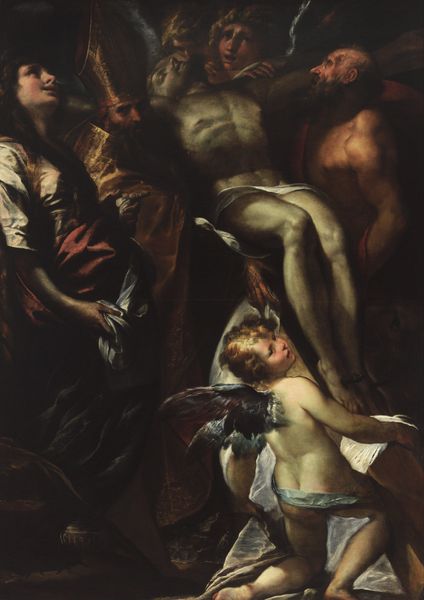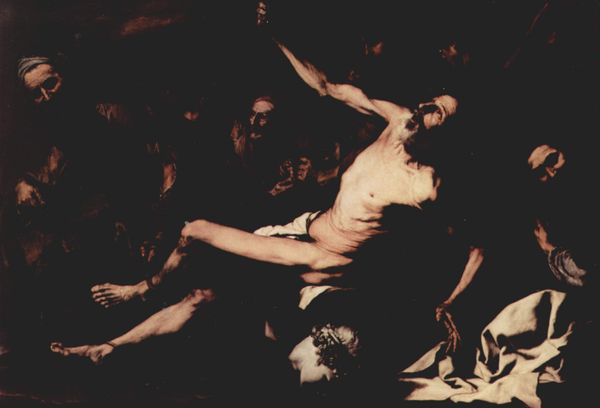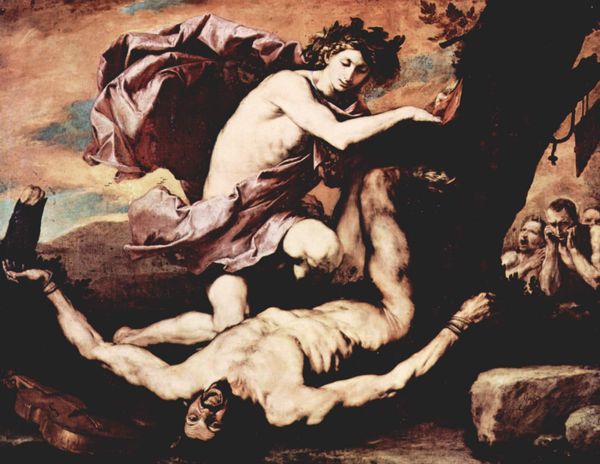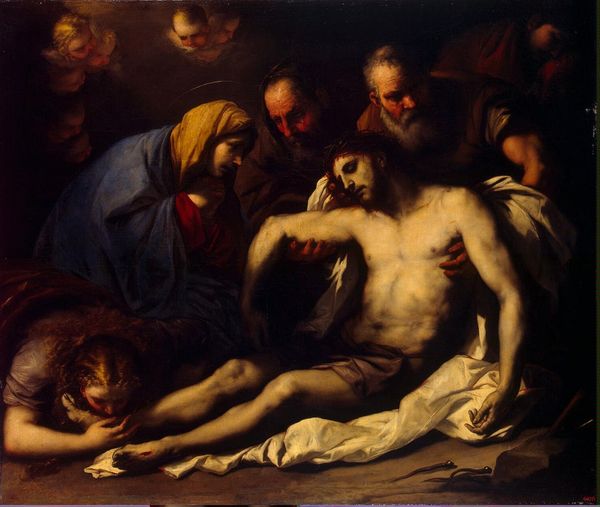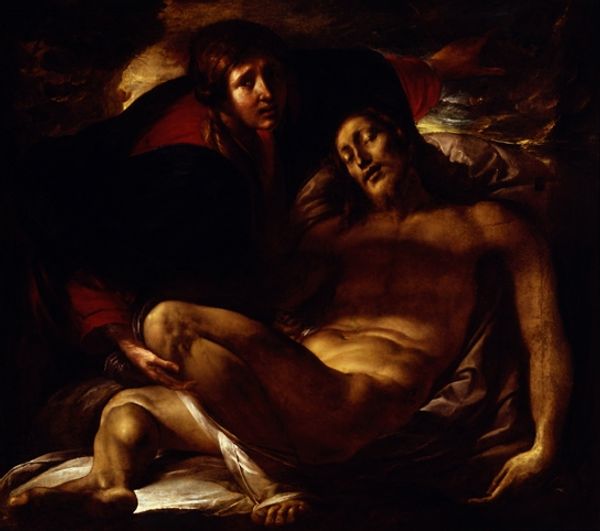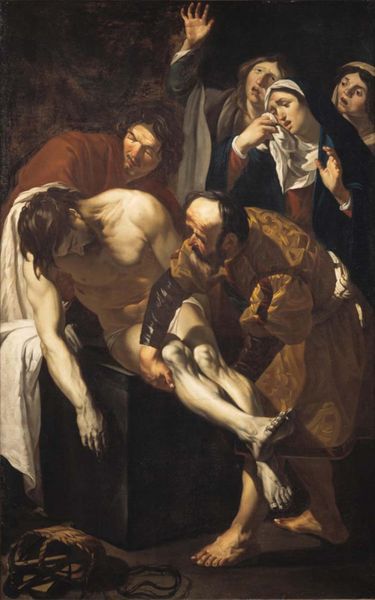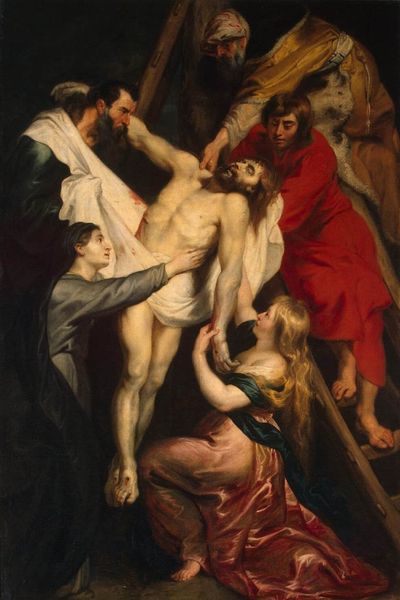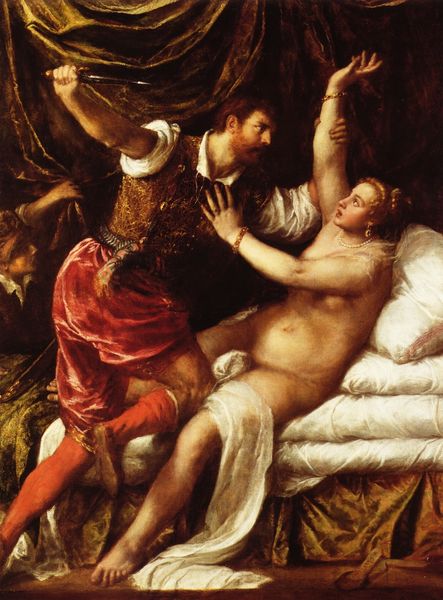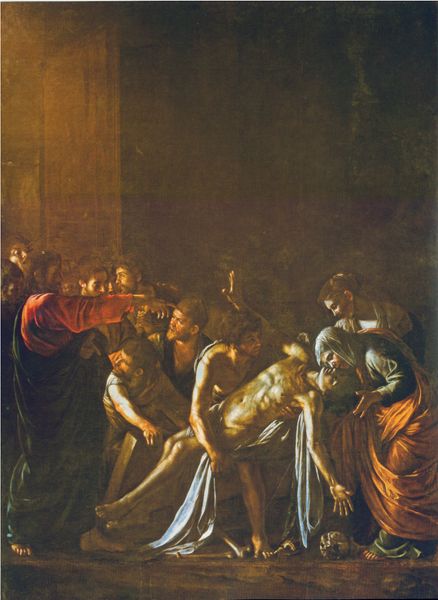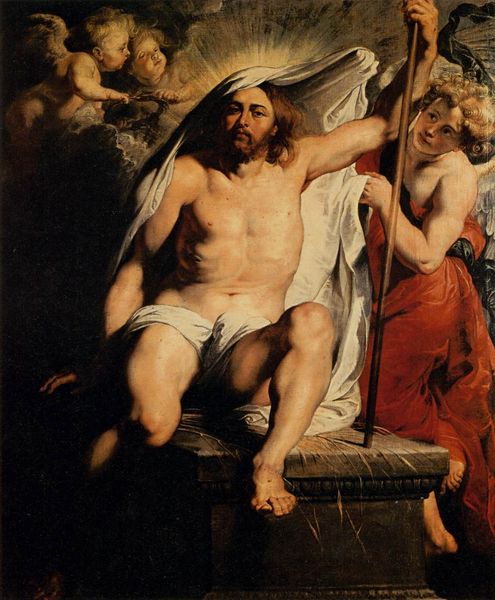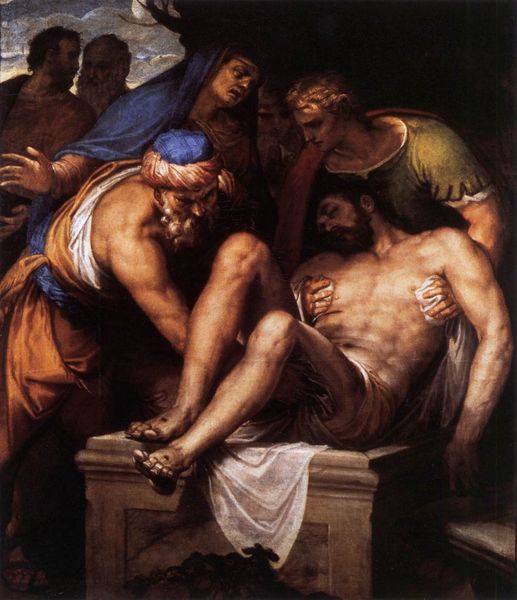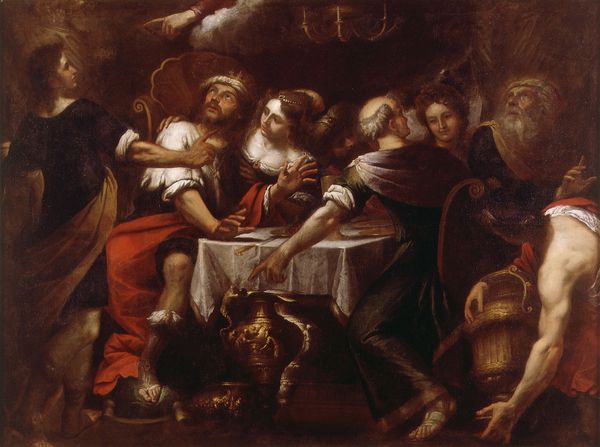
painting
#
baroque
#
painting
#
figuration
#
chiaroscuro
#
christianity
#
history-painting
Dimensions: 183 x 209 cm
Copyright: Public domain
Editor: Jusepe de Ribera's “The Martyrdom of St. Andrew,” painted in 1628, presents a somber scene. The dramatic use of light and shadow definitely evokes a strong feeling of suffering and injustice. What cultural symbols and historical meanings can we unpack from this piece? Curator: Look at the inverted "X" shape. Can you recognize that particular shape? What associations might it bring to mind? It's not just a compositional element, you see. Editor: Right, it’s the St. Andrew’s Cross! Symbolizing the way he was crucified. Does this specific form of execution carry any deeper cultural implications in the context of Baroque art? Curator: Indeed. Consider the period. Baroque art often used martyrdom scenes. Such images weren't merely historical records; they aimed to evoke an emotional and spiritual response in the viewer. Notice how Ribera uses *tenebroso*, that extreme contrast between light and dark? It throws the saint's suffering into sharp relief, amplifying the psychological weight of the scene. It links the individual suffering of St. Andrew to something grander. Editor: So it’s less about documenting and more about the viewers’ personal and spiritual connection to that suffering? Curator: Precisely! It bridges past and present. St. Andrew becomes a timeless symbol of faith under duress. Ribera, by showing St. Andrew's suffering, touches on our shared human vulnerability. What do you make of the faces of the observers? Editor: They seem… detached, some even voyeuristic. That's disturbing. I initially saw this as a religious testament. Curator: And it is, in part. But the expressions you see suggest broader considerations of power and spectatorship, the human inclination toward watching, the nature of belief itself, and how these impact the image's lasting cultural presence. Editor: This really makes me see beyond just the surface narrative; it’s a window into historical anxieties and timeless psychological traits! Thanks, I see a lot more now. Curator: It’s a dialogue across time, echoing within us even today.
Comments
No comments
Be the first to comment and join the conversation on the ultimate creative platform.
